Shure 565SD Bruksanvisning
Läs gratis den bruksanvisning för Shure 565SD (11 sidor) i kategorin mikrofon. Guiden har ansetts hjälpsam av 22 personer och har ett genomsnittsbetyg på 4.4 stjärnor baserat på 11.5 recensioner. Har du en fråga om Shure 565SD eller vill du ställa frågor till andra användare av produkten? Ställ en fråga
Sida 1/11

GENERAL
The UNISPHERE I 565 Series microphones are dual-im-
pedance, unidirectional dynamic microphones with a strong,
wire-mesh, spherical front grille that contains a highly effective
wind and “pop“ filter.
Shipped connected for low-impedance operation, 565 Se-
ries microphones provide excellent vocal or speech reproduc-
tion on lecterns and stages, and are a popular choice for use in
public auditoriums, churches, convention halls, and schools.
FEATURES
SSelectable dual impedance operation
SSilent magnetic reed on/off switch with lock-on option
SCardioid dynamic
SFrequency response: 50 to 15,000 Hz
MODEL VARIATIONS
Model 565SD-CN: Supplied with 6.1 m (20 ft) XLR cable.
Model 565SD-LC: No cable supplied.
CONNECTIONS
When using the microphone with a balanced input, pins 2
and 3 are the audio signal carriers. When using the microphone
with an unbalanced input, use a cable wired with pin 2 as the sig-
nal carrier and pin 3 connected to the cable shield (ground),
such as the Shure C20HZ high-impedance cable.
IMPEDANCE SELECTION
The microphone is shipped connected for low impedance
operation. To change to high impedance, proceed as follows
(refer to Figure 1):
1. Remove plug element at receptacle end of microphone by
turning slotted setscrew in (counterclockwise) and carefully
withdrawing plug element from case.
2. Disconnect 2-terminal impedance selection socket from
rear of plug element.
3. Reconnect 2-terminal impedance selection socket in re-
verse position so that pin 3 of plug element is inserted in
socket terminal “H” (White).
4. Reassemble plug element into microphone and seal set-
screw securely by turning out (clockwise).
IMPEDANCE
SELECTION SOCKET
PLUG
ELEMENT
SET SCREW
PIN 3
IMPEDANCE SELECTION—
RECEPTACLE END OF MICROPHONE
FIGURE 1
POLARITY
All cables and microphones should be tested to ensure
that they have the same polarity. To test two microphones
and/or their cables for proper polarity, connect them to an ampli-
fier and talk or sing into them while holding them three or four
inches apart. The sound from the speakers should be the same
when talking into either microphone or directly between them.
If the sound drops drastically, or if a dead spot is found when
talking between the two microphones, either the microphones
or their cables have opposite polarity.
To change the polarity of a microphone cable, either use
a Shure A15PRS phase reverser or interchange the wires con-
nected to pins 2 and 3 of the three-pin connector at one end of
the cable. To change the polarity of a microphone, the micro-
phone cartridge leads must be interchanged. This should be
performed by your dealer, the Shure Factory Service Depart-
ment, or other qualified service personnel.
SPECIFICATIONS
Type
Dynamic
Frequency Response
50 to 15,000 Hz (see Figure 2)
Polar Pattern
Cardioid (unidirectional)—uniform with frequency, sym-
metrical about axis (see Figure 3)
lmpedance
Dual. Microphone rating impedance is 150 ohms (250
ohms actual) for connection to microphone inputs rated
at 19 to 300 ohms and “High” for connection to high-im-
pedance microphone inputs.
Wired for low impedance as supplied. To change impe-
dance, see sections on lmpedance Selection and Con-
nections.
Output Level (at 1,000 Hz)
“L”
“H”
Open Circuit Voltage* –56.0dB –34.0 dB. . . . . . . . .
(1.6 mV) (20 mV)
*0 dB = 1 volt per Pascal (1 Pa = 94 dB SPL)
Model 565SD User Guide
27B3060 (CG)
2003, Shure Incorporated
Printed in U.S.A.
Produktspecifikationer
| Varumärke: | Shure |
| Kategori: | mikrofon |
| Modell: | 565SD |
Behöver du hjälp?
Om du behöver hjälp med Shure 565SD ställ en fråga nedan och andra användare kommer att svara dig
mikrofon Shure Manualer
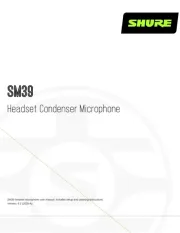
27 September 2025
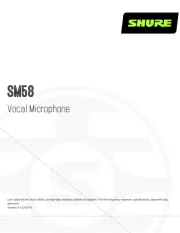
29 Juli 2025
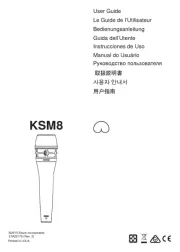
21 Juli 2025
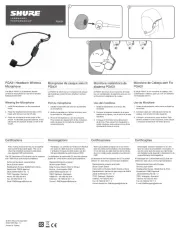
21 Juli 2025
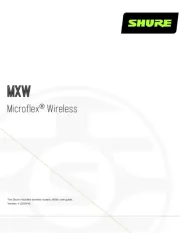
21 Juli 2025
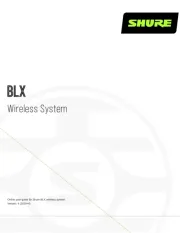
21 Juli 2025
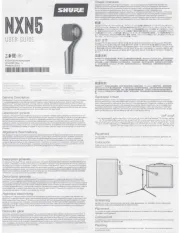
21 Juli 2025

20 Juli 2025
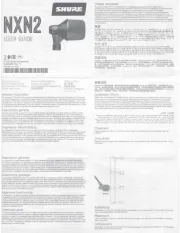
20 Juli 2025

20 Juli 2025
mikrofon Manualer
- JZ Microphones
- Hollyland
- Auray
- Apogee
- American DJ
- Owl Labs
- Jabra
- Ambient
- Xvive
- Auna
- AVerMedia
- Axis
- Audio-Technica
- President
- Atlas
Nyaste mikrofon Manualer
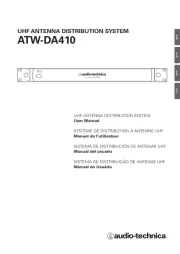
19 Oktober 2025
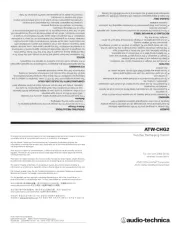
19 Oktober 2025

18 Oktober 2025
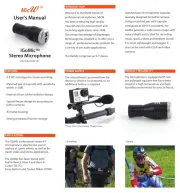
18 Oktober 2025

18 Oktober 2025

18 Oktober 2025

18 Oktober 2025
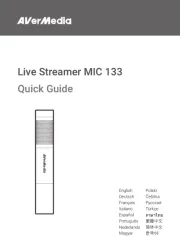
16 Oktober 2025
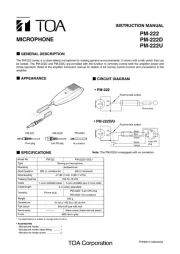
15 Oktober 2025
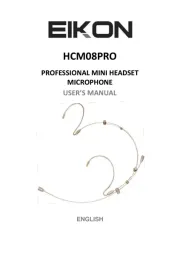
13 Oktober 2025